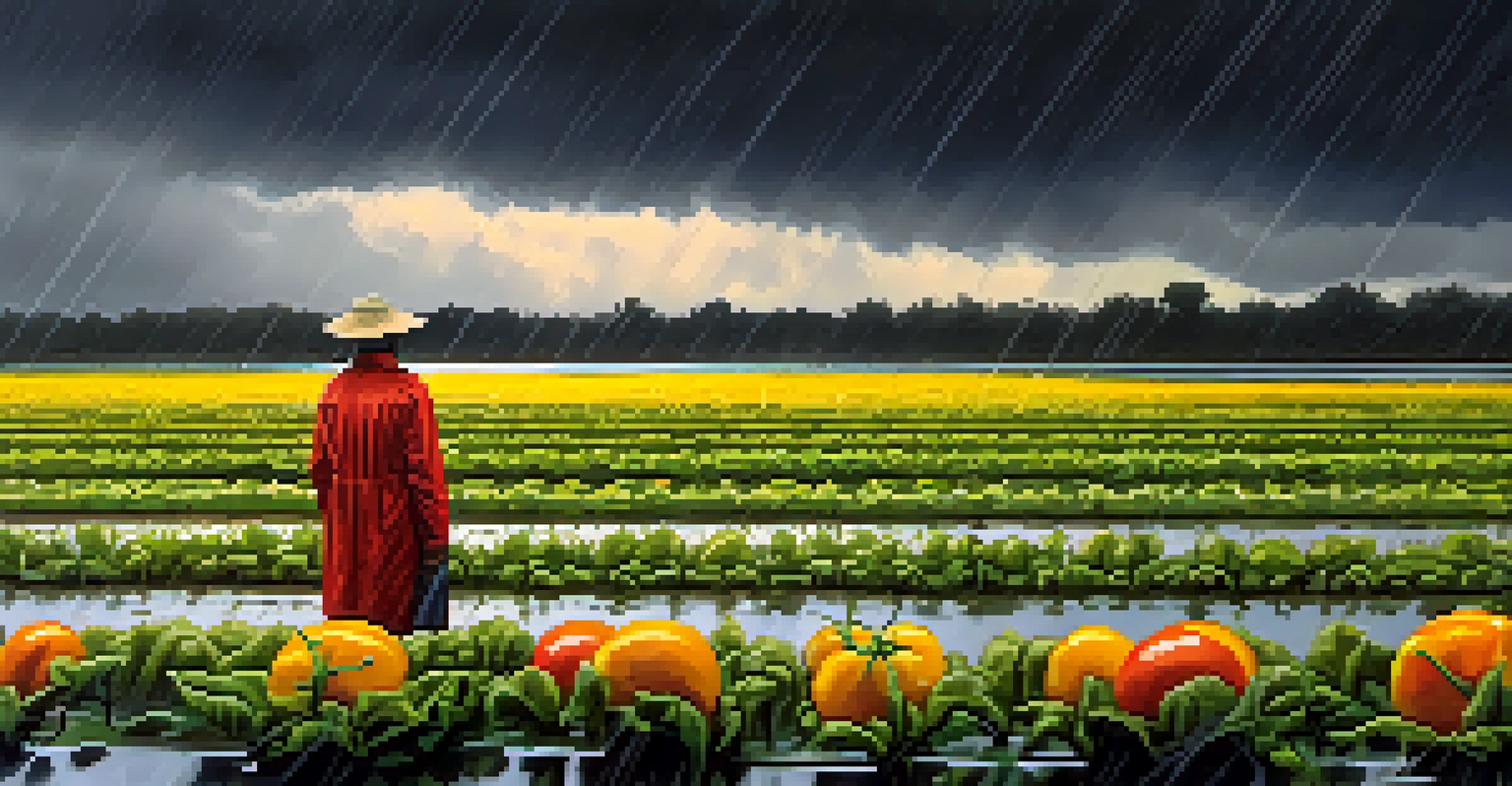Understanding Florida's Rainy Season: Impact and Implications

What Defines Florida's Rainy Season?
Florida's rainy season typically runs from May to October, marked by heavy afternoon thunderstorms. During this time, the state experiences a significant uptick in humidity and temperature, creating ideal conditions for rain. The combination of warm ocean waters and moist air contributes to the formation of these storms, which can sometimes be quite intense.
The rain may be falling, but it is also nourishing the earth and our spirits.
This seasonal pattern is driven by the subtropical climate of Florida, which means that residents can expect daily rainfall, particularly in the afternoon or evening. While some may view these thunderstorms as disruptive, they play a crucial role in Florida’s ecosystem. The rain replenishes water supplies and supports the lush vegetation that thrives in this vibrant state.
Understanding the rainy season is essential for both locals and visitors alike. It shapes outdoor activities, travel plans, and even local wildlife behavior. Being prepared for sudden downpours can make all the difference in enjoying the beauty of Florida during this time.
Environmental Impact of the Rainy Season
The rainy season is vital for Florida's unique ecosystems, particularly its wetlands and forests. Rainfall helps maintain water levels in swamps and marshes, crucial habitats for a diverse range of wildlife. The seasonal flooding can also rejuvenate plant life, giving rise to vibrant blooms and rich green landscapes that characterize the state during this period.

Additionally, the rainy season contributes to the hydrological cycle, helping to replenish aquifers that are essential for drinking water. This natural process ensures that Florida's water supply remains sustainable, despite the challenges posed by population growth and climate change. Healthy ecosystems, in turn, support tourism and outdoor recreation, vital components of Florida’s economy.
Florida's Rainy Season Duration
Florida's rainy season spans from May to October, characterized by heavy afternoon thunderstorms that are essential for the state's ecosystem.
However, the heavy rains can also lead to challenges, such as flooding and erosion. Understanding the balance between necessary rainfall and the risks associated with it is crucial for environmental management and conservation efforts across the state.
Effects on Local Flora and Fauna
Florida's diverse plant and animal life depends heavily on the rainy season for survival. Many plants have adapted to thrive during these wet months, with some species even requiring the seasonal rains to germinate and grow. For instance, the iconic cypress trees and various wetland plants flourish in the saturated conditions, showcasing nature's resilience.
In every storm, there is a lesson on how to stand tall and weather the challenges of life.
Wildlife also benefits from the increased water availability. Many animals, such as alligators and various bird species, rely on the seasonal floods to access food and nesting sites. These conditions can lead to more visible wildlife activity as animals take advantage of the abundant resources that the rainy season provides.
However, the storms can also displace wildlife and disrupt their habitats. Understanding these impacts can help in developing strategies to protect vulnerable species and preserve Florida's rich biodiversity.
Impact on Agriculture and Farming
The rainy season has a significant impact on Florida’s agricultural sector, which thrives on the state's warm climate and fertile soil. For many farmers, the rains are a blessing, providing necessary irrigation for crops such as citrus, tomatoes, and sugarcane. These crops benefit from the natural watering, often resulting in better yields and reduced irrigation costs.
However, too much rain can also pose challenges for farmers. Excessive rainfall can lead to waterlogged fields, affecting crop health and increasing the risk of diseases. Farmers must carefully monitor rainfall patterns and manage their irrigation systems to mitigate these risks.
Impact on Agriculture
The rainy season is crucial for Florida's agriculture, providing necessary irrigation for crops, but excessive rainfall can also present challenges for farmers.
Additionally, the rainy season can influence planting schedules and harvest times. Understanding these dynamics allows farmers to adapt and make informed decisions about crop management, ultimately leading to a more resilient agricultural system.
Challenges of Storms and Hurricanes
Florida's rainy season is notorious for its potential to bring severe storms and hurricanes. While summer thunderstorms are common, the season can escalate to include tropical storms, which can cause significant damage. Understanding the difference between a typical afternoon storm and a more severe weather event is crucial for safety and preparedness.
Hurricanes pose a particular threat, often forming in the warm waters of the Atlantic and Gulf of Mexico during this time. The state has a comprehensive emergency management plan in place, but residents and visitors must also stay informed about weather alerts and evacuation routes. Preparing for the worst can make all the difference in ensuring safety during these intense weather events.
Moreover, the aftermath of hurricanes can lead to long-term challenges, including flooding and infrastructure damage. Understanding these potential impacts can help communities better prepare and respond to the inevitable storms that accompany Florida's rainy season.
Cultural Significance of the Rainy Season
The rainy season holds cultural significance for many Floridians, influencing local traditions and lifestyles. Festivals and events often celebrate the life-giving rains, highlighting the importance of water in Florida’s culture. This connection to nature fosters a sense of community and appreciation for the environment.
Moreover, the rains can affect recreational activities, such as fishing and boating, which are integral to Florida's coastal lifestyle. While some may find the sudden downpours inconvenient, others embrace the opportunity to enjoy the unique beauty of the state during this vibrant season.
Cultural Importance of Rain
The rainy season holds cultural significance for Floridians, influencing local traditions, festivals, and recreational activities that celebrate the life-giving rains.
This cultural perspective on the rainy season also extends to art and literature, where the rains are often depicted as a source of inspiration. Understanding this cultural context can deepen our appreciation for Florida’s natural rhythms and their impact on daily life.
Preparation for the Rainy Season
Preparing for Florida's rainy season is essential for both residents and visitors. This involves not only being aware of the weather patterns but also having appropriate gear ready, such as umbrellas and waterproof clothing. Homeowners should also inspect drainage systems and gutters to ensure they function properly during heavy rains.
For those living in flood-prone areas, having an emergency plan and supplies can be crucial. This includes items like water, non-perishable food, and first aid kits. Understanding local flood zones and evacuation routes can help ensure safety should a severe storm occur.

Moreover, staying informed through weather apps and local news can provide real-time updates on changing conditions. Embracing a proactive approach to preparing for the rainy season can make a significant difference in navigating this time of year comfortably.